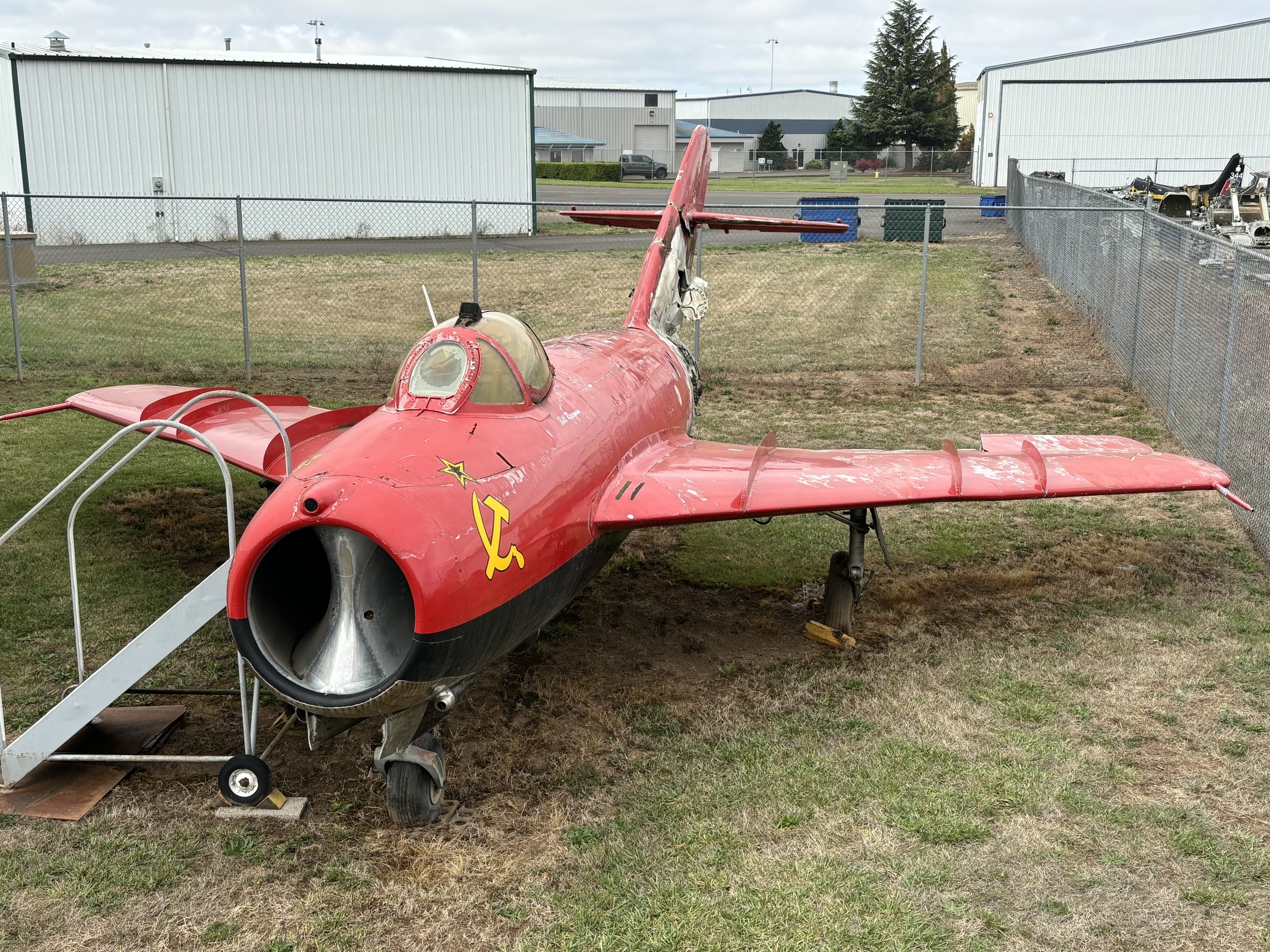MIG-17
The MIG-17 was already in the development phase by the time the Soviets debuted their prior design, the MIG-15. The idea was to observe the weaknesses of the 15 in combat during the Korean War.
The most notable changes of the MIG-17 were the addition of more control surfaces, the sweeping of the wings back further, and the addition of an afterburner. These changes allowed the MIG-17 to approach supersonic speeds, being controllable at Mach 0.93.
Over its long service history, the MIG-17 has proved itself as a successful aircraft
-
Crew: 1
Length: 36 ft 5 in
Wing Span: 30 ft 10 in
Height: 12 ft 6 in
Empty Weight: 8,665 lbs
-
Maximum Speed: 715 mph
Rate of Climb: 12,800 ft/min
Crusie Speed: 550 mph
Service Ceiling: 49,500 ft
Our MIG-17
The museum's MiG-17 is actually a Shenyang J-5 license built in China, and was acquired by Bill Reeseman of Aurora, Oregon, in 1992. Bill flew it in his spectacular "MiG Magic" airshow routine. On March 1, 1994, Bill was testing a newly installed engine over Aurora Airport when a fuel line ruptured during a fuel afterburner climb. In spite of a severe fire, Bill elected not to eject and brought the MiG down to a safe but hurried landing.

